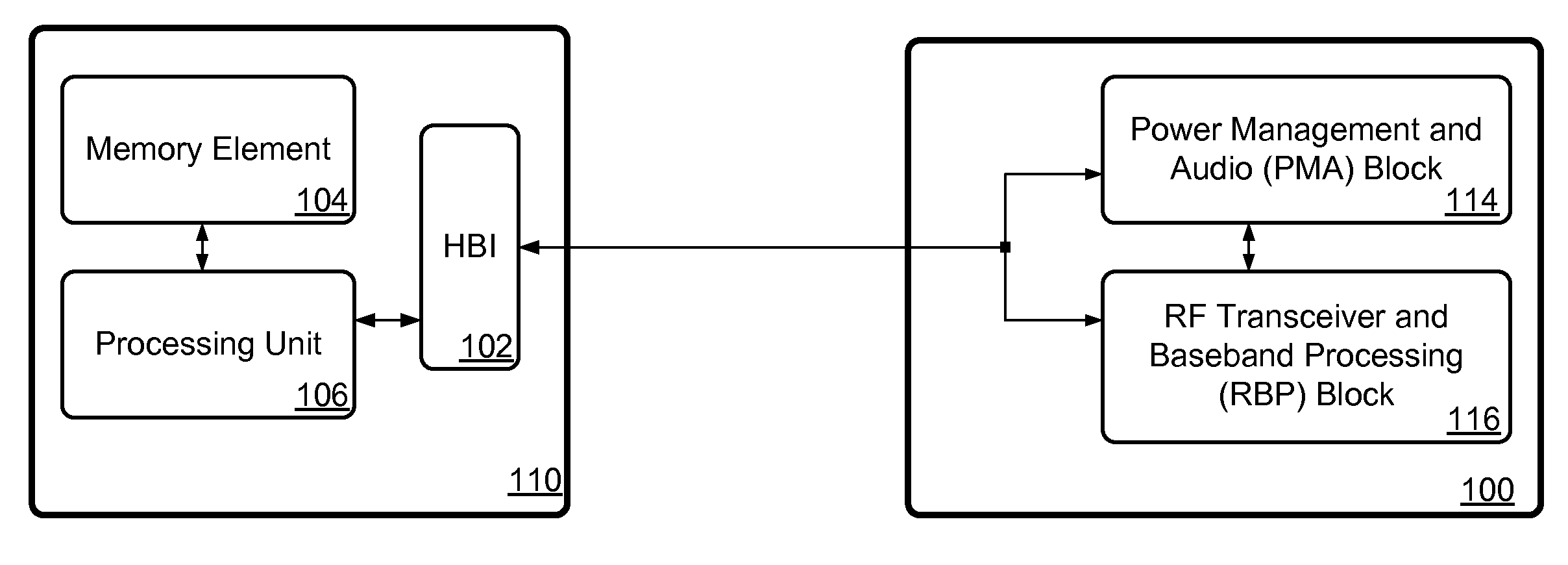Transmit Power Control Algorithms for Sources and Sinks in a Multi-Link Session
a multi-link session and power control technology, applied in transmission, power management, sustainable buildings, etc., can solve the problems of increasing the maximum pa output power and a significant increase in power consumption, and achieves the effect of increasing the output power of pa, increasing power consumption, and increasing path loss
- Summary
- Abstract
- Description
- Claims
- Application Information
AI Technical Summary
Benefits of technology
Problems solved by technology
Method used
Image
Examples
Embodiment Construction
[0023]FIG. 1 shows the partial block diagram of one embodiment of a wireless audio system that includes a Radio Frequency (RF) transceiver system 100 divided into two main functional components: a Power Management and Audio (PMA) block 114 and an RF Transceiver and Baseband Processing (RBP) block 116. PMA 114 and RBP 116 may each be configured on an Integrated Circuit (IC) or on respective ICs, and may interface with each other via a number of signals (more details of RF transceiver system 100 are shown in FIG. 2 and are discussed in more detail below). PMA 114 and RBP 116 may also couple to components of a host system 110 through a host bus interface (HBI) 102. Host system 110 may include one or more memory elements 104 that can store program code executable by a processing unit 106 (which may be a general purpose central processing unit, or a microcontroller or some similar component) to perform various control operations on RF transceiver system 100. In turn, RF transceiver syste...
PUM
 Login to View More
Login to View More Abstract
Description
Claims
Application Information
 Login to View More
Login to View More - R&D Engineer
- R&D Manager
- IP Professional
- Industry Leading Data Capabilities
- Powerful AI technology
- Patent DNA Extraction
Browse by: Latest US Patents, China's latest patents, Technical Efficacy Thesaurus, Application Domain, Technology Topic, Popular Technical Reports.
© 2024 PatSnap. All rights reserved.Legal|Privacy policy|Modern Slavery Act Transparency Statement|Sitemap|About US| Contact US: help@patsnap.com










